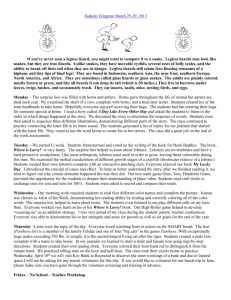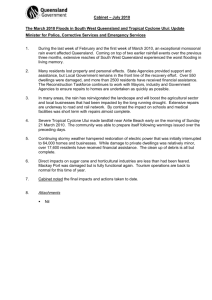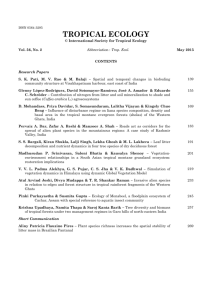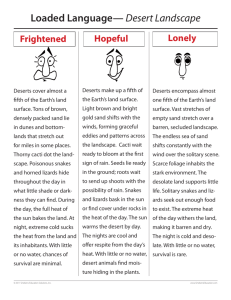Vertebrates of the Cryptosphere
advertisement
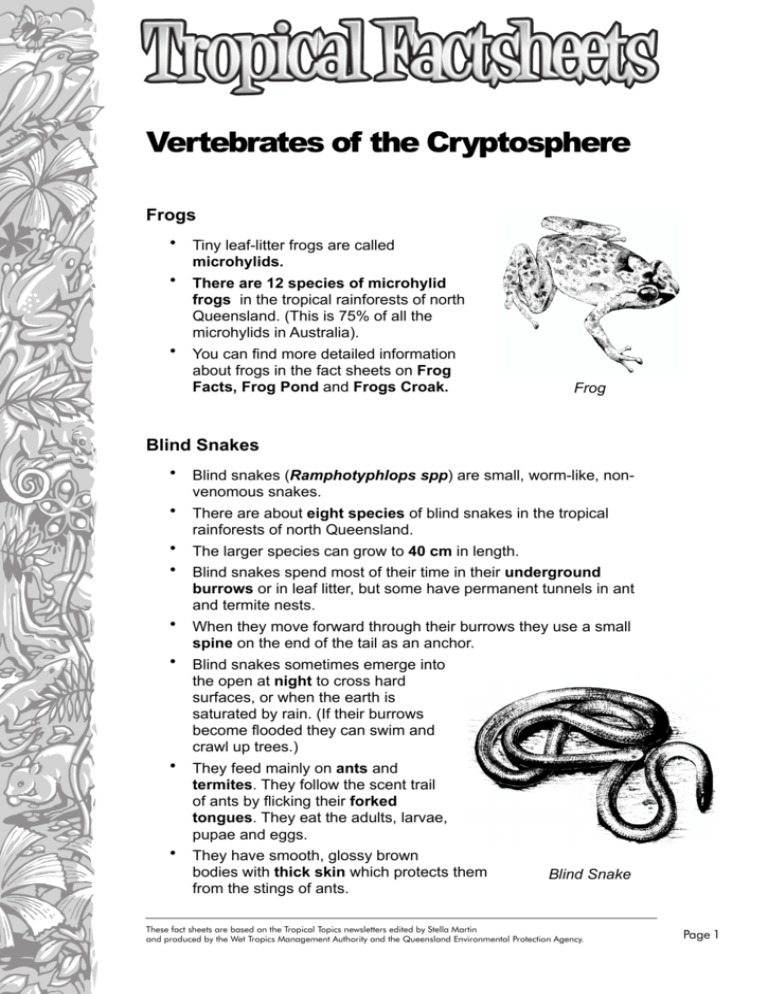
Vertebrates of the Cryptosphere Frogs • • • Tiny leaf-litter frogs are called microhylids. There are 12 species of microhylid frogs in the tropical rainforests of north Queensland. (This is 75% of all the microhylids in Australia). You can find more detailed information about frogs in the fact sheets on Frog Facts, Frog Pond and Frogs Croak. Frog Blind Snakes • • • • • • • • Blind snakes (Ramphotyphlops spp) are small, worm-like, nonvenomous snakes. There are about eight species of blind snakes in the tropical rainforests of north Queensland. The larger species can grow to 40 cm in length. Blind snakes spend most of their time in their underground burrows or in leaf litter, but some have permanent tunnels in ant and termite nests. When they move forward through their burrows they use a small spine on the end of the tail as an anchor. Blind snakes sometimes emerge into the open at night to cross hard surfaces, or when the earth is saturated by rain. (If their burrows become flooded they can swim and crawl up trees.) They feed mainly on ants and termites. They follow the scent trail of ants by flicking their forked tongues. They eat the adults, larvae, pupae and eggs. They have smooth, glossy brown bodies with thick skin which protects them Blind Snake from the stings of ants. These fact sheets are based on the Tropical Topics newsletters edited by Stella Martin and produced by the Wet Tropics Management Authority and the Queensland Environmental Protection Agency. Page 1 • • • • The larger blind snakes even feed on ferocious bulldog ants. They have small eyes below their body scales. These are just light sensitive spots capable of detecting light and dark. All blind snakes lay eggs. Predators of blind snakes include bandicoots, birds and other snakes. (The black and white striped bandy snake feeds only on blind snakes.) Legless lizards • • • • • • • Legless lizards have no front legs, and only flaplike hind limbs. Burton’s Legless Lizard Being legless, it is easy for them to burrow in soil and leaf litter and to enter small spaces. Legless skinks feed on insects and other invertebrates in the leaf litter, soil or beneath bark. They have no movable eyelids and lick their eyes to clean them. Legless lizards are different from snakes because they have broad, fleshy, unforked tongues, make squeeky sounds, have external ear openings, more head scales, and can shed their tails under stress. They regrow their tails at a later stage. Legless lizards can mimic venomous snakes, even though they are not poisonous. The largest legless lizard in the tropical rainforests of north Queensland is Delma mitella. It grows up to 75 cm long. It is very rare, and occurs only at a few rainforest edges on the eastern side of the Atherton Tableland and Paluma. It lives under fallen timber or in decaying logs. It feeds on insects in the leaf litter. It lays 2 eggs per clutch. Skinks • • • Most skinks live on the forest floor among the leaf litter. They also shelter under rotting logs and rocks. Most skinks hunt insects and other small invertebrates during the day in the leaf litter and fallen logs. Like most lizards, skinks depend on the external environment to keep their bodies within a certain temperature range. They have flat bodies to catch as much warmth as possible as they bask in the sun to raise their body temperature. These fact sheets are based on the Tropical Topics newsletters edited by Stella Martin and produced by the Wet Tropics Management Authority and the Queensland Environmental Protection Agency. Page 2 • • • • • • • Many skinks are able to shed their tails when caught by a predator. This process is called autotomy. They have fracture planes between the vertebrae in the tail. Muscles on either side of the planes pull in opposite directions and break the tail in two. Although most species can replace the tail, the new one has a rod of cartilage running through it instead of bone. Skinks are the most numerous and diverse group of lizards in the tropical rainforests of north Queensland. Most of them are small and brown, but the Major’s Skink grows up to 40cm in length. They live in small colonies with parents and offspring Skink all sharing a complex burrow system. The smallest skink in the tropical forests of north Queensland is Saproscincus tetradactyla, which is about 6cm long. The most common skink in these forests is the Red-throated Skink. It grows up to 14cm long. Breeding males have red necks. Females lay one to two eggs per clutch, sometimes communally. They prey on insects and small skinks, including their own species. They wave their tails continually to encourage potential predators to target its detachable tail. The Pink-tongued Skink grows to a length of 31 cm. Some adults are unbanded, while the juveniles are strongly banded. They are semi-nocturnal. They are ground-dwelling but they can also climb low vegetation using their prehensile tails. They feed mainly on insects in the leaf litter. They produce up to 25 live young per litter. The Prickly Forest Skink grows to a length of 17 cm. It is endemic to the tropical rainforests of north Queensland. They live in rotting logs in the dampest part of the rainforest. They are very heatsensitive, and emerge to forage only around twilight and at night. They have very rough, prickly back scales which disperse moisture over its body. These fact sheets are based on the Tropical Topics newsletters edited by Stella Martin and produced by the Wet Tropics Management Authority and the Queensland Environmental Protection Agency. Page 3
